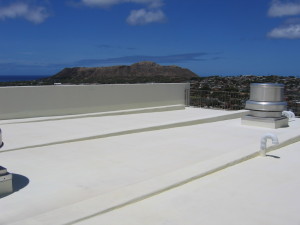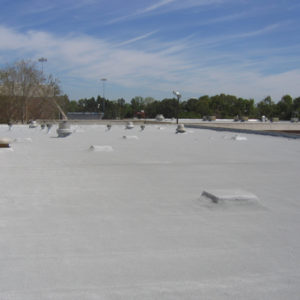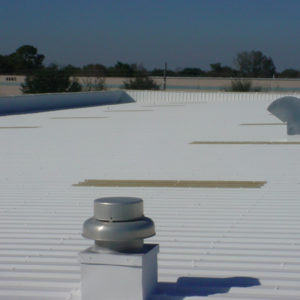As a liquid applied coatings manufacturer, we compete with those providing membrane alternatives on a daily basis to win restoration business for our contractors. Often we find ourselves educating the client and dismissing preconceived notions that roof restoration isn’t a viable option over the long term. However, in reality, roof coatings have a lot of advantages over what many regard as accepted roofing options.
There are numerous economic advantages of roof restoration compared to roof replacement, advantages that are quantifiable and quite significant. Cost savings of 50 – 70% are commonly found when comparing restoration to replacement, allowing organizations to defer significant costs while realizing a solution that will last 10 years with the potential for a renewal application in many cases.
Roof restoration offers tax advantages when compared to roof replacement because materials and labor costs of the project can be expensed in the same fiscal year rather than these items being capitalized and depreciated as would be the case with roof replacement. Building owners should consult with their tax and accounting advisors to understand their specific situation and the potential benefits of accelerating the expenses of roof restoration as an alternative to roof replacement.
Additionally, roof restoration can be accomplished without the disruption of services experienced with a typical replacement project and the lost revenues and transition costs associated with facility closure. Inconveniences can result in lost customers, a result we all want to avoid and one that increases the marketing investment required to replace these customers.
Reflective “cool roof” applications enable many organizations to realize reduced energy costs during peak summer months. These savings can very be significant over time, and the reduction of roof surface temperatures tends to make building spaces more comfortable. Temperature reduction also decreases the stress on the roof caused by sunlight and intense heat as application of a reflective coating can accomplish a reduction of roof surface temperatures from 180° Fahrenheit to less than 100° during hot summer months.


